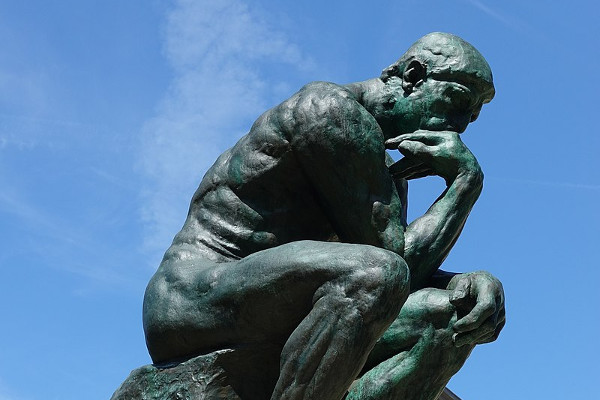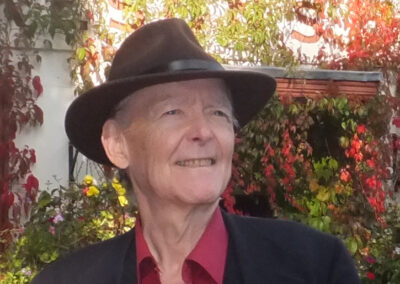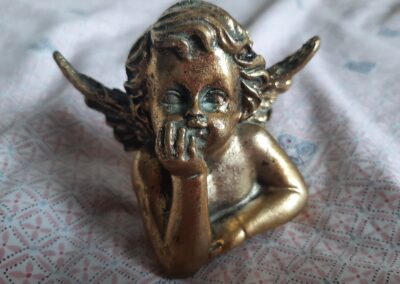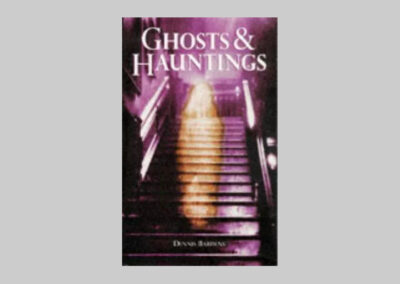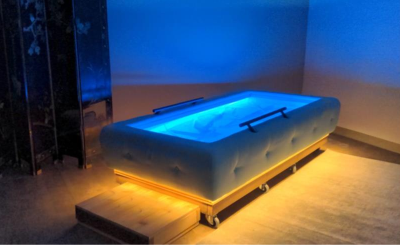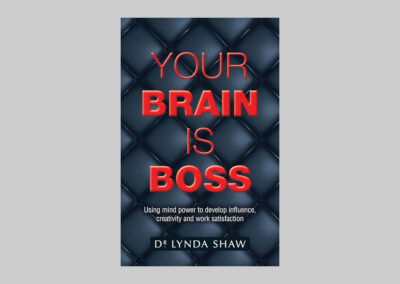Preamble
Leaving aside such hoary pensées as that of Descartes’, ‘I think therefore I am’, how much of the world can we know from our own observation? How aware of how reliant are we on the work of others?
How do we know – if not an astrophysicist – that the moon is 238.555 miles away? The earth may not be flat ‘as a pancake’ given the mountain ranges but do we check it out, ruler in hand? We ‘stand on the shoulders of the Greats’ but don’t throw a wobbly even though we believe that politicos or prelates not of our pet persuasion have feet of clay. Rather we think they often seem to sprout a third foot just to soak up excess terracotta! Not so the scientific community; it is venerated. Can we raise an eyebrow at some theories though it is the scientists who thrive on these puzzles?
If one pipes up with a query about science, one at least can be emboldened by the fact that scientists often aren’t of one mind.
Some things seem odd in the current view of the Cosmos. An impressive tour d’horizon in ‘New Scientist’s Essential guide to TIME: Adventures in the fourth dimension’ (Guide No 19) plumbs deep mysteries. It is a wonderful summation of where we are at in this scientific frontier of discovery.
Scientists test theories, shake phials, perform mathematical prodigies, a metaphoric towel round their eggheads, awe-inspiring work, grounded in reality. What is ‘reality’? NASA didn’t send up a poet to the moon simply to rid planet earth of a noodle-head.
It is a worthwhile goal to try and find out as much as we can about our place in the world. The exercise of considering these issues en passant may give us perspective on our lives.
Pack for this magical mystery tour John Thorn’s advice to ‘show a healthy disrespect for the printed word’ and perhaps a flask of double brandy.
When measurements are taken, observations docketed, and complicated maths unveiled, why allow just scientists a say on the significance of cosmological findings?

Some queries below would seem to pack more punch than others.
THE BIG BANG
The Big Bang is thought to be the start of time and of space. In the beginning, it exploded out of nothing then rapidly expanded… When our space-time was less than a second old, this expansion accelerated faster than the speed of light of cosmic acceleration for a very brief moment, a percentage of a second with 40 zeros after the decimal, an exponential rate of increase (with mould on a loaf, what is a little bit because a lot very quickly)…The early universe can be tested by deciphering the cosmic microwave background radiation, the flood of light released 380,000 years after the Big Bang…The only thing that can violate the universal speed limit is space-time. (ibid).
QUERIES ON PROPOSITION A:
TIME DILATION
Bob sets up 2 pulses of lift to each end of the carriage. What he sees is that they hit the walls simultaneously, but this is not what Alice – an observer affected by the fact that the train has moved forward – sees from the platform.
If observers who move relative to one another cannot agree on the simultaneity of events they cannot agree on the measurement of time.
Exposition: What we think is that we are stationary but in reality we are all compared to an observer outside the planet… To Alice, the light-pulse travels a longer path than if the train is stationery. The speed of light is a constant so the time taken for one tick of the moving clock of Bob is longer according to Alice. According to Relativity Bob can make the same calculation but he regards the train as at rest – so he infers that the clock on the platform is running slow. The readings of the clocks ‘at the same instant’ can’t be compared until we decide what the same instant means; Bob and Alice think differently about it.
Example of testing: Christian Lisdat of the National Metrology Institute of Germany put a strontium atomic clock on a moving trailer with rubber dampers to mitigate (is that enough?) vibrations, climate control to stabiilise temperature, and measurements were taken in French mountains and in low-lying Turin. A year in the Alps was shown to be 84 nanoseconds longer in Turin. Tobias Boulder in 2023 in Colorado stacked hundreds of thousands of strontium atoms in a vertical stack I
QUERIES ON PROPOSITION B:
COSMOLOGICAL TIME DILATION
Time seems to have ticked more slowly when the universe was young. Light from ancient cosmic events travel increasingly longer distances to reach earth. Those events seem to unfold more slowly than an event here and now. Anyone around at the start would have seen time evolving normally
Exposition: Around 7 billion years ago an event appears to evolve at 60% of the speed we see today. In 2023 Geraint Lewis at Sydney University … detected a more extreme version earlier. They looked at 190 quasars, (objects at the centre of some galaxies – a supermassive black hole surrounded by a disc of hot plasma that spits out high energy particles) … The earliest quasar about 1 billion years after the start of the universe appears to run five times more slowly that quasars from today.
QUERIES ON PROPOSITION C:
PERCEIVING TIME
Most of us can estimate time passing with amazing precision thanks to a complex network of neural mechanisms; perhaps we even create the arrow of time in our heads. Our bodies keep track of time unconsciously too – which contributes to our perception of time slowing down or speeding up
Exposition: In the absence of clocks, schedules or calendars our bodies still march to the beat of internal timekeepers called circadian (in the suprachiasmatic nucleus which relies on pendulum-like oscillations inside proteins to keep us in synch with the sun rhythms.) A connection to the spinning of earth on its axis that ensure that biological processes occur at the right time of day or night. Various organs work optimally at certain times, the way we respond to medicines etc – are our bodies operating in time with the physical world. Light hits specialised cells on the retinas of our eyes that send signals about the time of day to a master clock in the brain – it regulates a multitude of clocks in cells and organs throughout the body. ‘Place cells’ mark where in a spatial environment an animal is. If an animal walks in a linear tunnel, place cells fire in a linear line. Time cells do something similar but for the passage of time. At an event, ie a dinner party or movie, the brain recognises this as a specific or notable chunk of time, what neuroscientists call an ‘episode’. The subjective experience of time may depend on how many episodes one is creating.
To track the passing of time we may also need ‘ramping cells.’ Time cells wait till it is their turn to fire, a ramping cell will fire intensely to mark the beginning of an episode, then gradually slow down. So…the brain combines information from place cells about where an event is happening and sensory information about what is going on…then add in the time and ramping cell activity, and the brain puts all the information into the appropriate time frame. It’s packaged into episodic memories and stored allowing us to perceive the temporal order of our lives.
But there may be other rhythms. Theta rhythms – waves of brain activity that oscillate at around 4 to 8 hertz – may timestamp activities, depending on where within the wave they occur…there is one model proposed in which theta oscillations are happening in multiple places in the hippocampus and where other neurons fire relative to this wave. Some researchers believe that the brain can tell time without time and ramping cells.
QUERIES ON PROPOSITION D:
CAUSE AND EFFECT IN THE QUANTUM REALM
The lack of straightforward cause and effect in the quantum mechanical world muddles our understanding of how time works in the smallest realm.
Predicting the way a glass will shatter is easier than the process in reverse. Can objects be in two different states at the same time? Cause and effect doesn’t exist in the Quantum world; an object can be in two separate states at the same time.
Exposition: Quantum superposition (is defined) as an object being in two different states at the same time… In 2012 it was proposed that the temporal sequence of two events, just like the positions of a particle or the path it took, could also exist in superposition. Thus the arrow of time could have abrupt kinks in its trajectory. A Viennese University professor, Herr Walther, saw a photon pass through two gates, A & B, but it was impossible to tell which it went through first. This might hold true for causality. The idea that the present can influence the past is ‘retrocausality’ – follows from superposition
General Relativity doesn’t sit easily with quantum mechanics. General Relativity is a set of equations that describe the way classical objects are affected by gravity. The 3 dimensions of space and the 4th dimension of space are part of the same entity, woven into pace-time. Hence space-time bends around large masses. Time slows down when objects move close to the speed of light. Anything that concerns the dynamics of things larger than an individual particle.
Quantum mechanics by contrast shows that atoms and sub-atomic particles are governed by the other three fundamental forces of nature, the electromagnetic force and the strong and weak nuclear forces. Partciles can appear to be in two places at the same time, information passing between them even though they may be separated by large distances.
Particles can seem affected by events that happen in their future.
QUERIES ON PROPOSITION E:
STEPHEN HAWKINGS’ FINAL THEOREM
Why is the universe just right for life to arise? Twiddle ever so slightly with any of the numerous laws of physics and habitability would often hang in the balance.
All that there is to know about the interior of Black Holes can be encrypted on their event horizon surface. Maldacena saw the universe like a hologram. A system of entangled particles located on a surface may contain within it all the information of a higher-dimensional cosmos with gravity and curved space-time. Einstein’s theory of gravity works with quantum theory. History itself is hologrammatically encrypted – in the dimension of time that holographically pops out. Time emerges in the ex post facto manner, contingent on the present. It’s not the laws that are fundamental but their capacity to change.
Exposition (a): It seems that some properties of physical laws were not carved in stone but could be the accidental outcome of the particular manner in which the early universe cooled after the big bang. Random transitions, so it there perhaps more than one universe? (p 74). Maybe there is a multiverse – an enormous inflating space with a variegated patch work of universe, each with its own big bang, leading to its own local physical laws.
Exposition (b): The Higgs boson (it weighs as much as 133 protons – this is a 100 million billion times lighter than what many physicists would consider a natural mass) couples to other particles of matter and so imbues them with mass, which adds to the Higg’s own matter, so one would expect it to be far weightier. The unbearable lightness of the Higgs is critical for life. Higgs keeps electrons, protons, neutrons etc and light as well, and this ensure that DNA, proteins and cells don’t collapse under the force of gravity.
Exposition (c): consider the expansion of the universe. In 1998 cosmologists discovered that the expansion of space has been accelerating for about 5 billion years. Because of Vacuum Energy, predicted by Quantum theory BUT the density of vacuum energy seems to be 10 x 120 times lower than expected of the theory. If the vacuum energy density of the universe were just a tad larger, however, its repulsive effect would be stronger and acceleration would have kicked in much earlier. This would have meant that matter was so sparsely distributed that it couldn’t clump together to forms stars and galaxies.
Hawking is not happy with a multiverse: ‘We are not angels who view the universe from the outside’. Multiverse cosmology needs ‘metalaws’ governing all the universes, but they don’t specify in which of the habitable universes we are supposed to be in. Without a rule that relates the metalaws of the multiverse to the local laws within our universe, there is a spiral of paradoxes.
QUERIES ON PROPOSITION F:

There is so very much we do not understand. In the scriptures the Lord appeared in a cloud. One did not directly see Him. Perhaps this is as good a metaphor as any.
Take molecular clocks – ‘ticks using vibrations of strontium that could be used to test Einstein’s theory of relativity or search for forces that have yet to be described’. (ibid). It is an admission that scientists are aware that there are forces yet to be described. The second law of thermodynamics may state that in a closed system (nothing goes in or out) entropy will always increase, with entropy being the measure of a system’s thermal energy per unit that is unavailable for doing useful work. To assume of a state like the entire cosmos that it is a closed system is begging one fundamental question: is the cosmos a closed system for any purpose other than making our theories about it sound neat? Or take ‘entropy’, a concept associated with a state of disorder, randomness, or uncertainty: to get from there to the idea that: ’the degradation of the matter and energy in the universe (will be) to an ultimate state of inert uniformity.’ may need so much unpacking that the packaging itself may obscure our gaze on what we can perceive as the reality
Such a kaleidoscope of mind-blowing concepts! Almost every page of the New Scientist edition, the basis on which this article was written, from so many experts in the field and also so many other monographs, papers, tracts and the like, contain revelations for the layman. How strange it all is! How much scope for reflection!
One could do worse than say, with Hamlet, that ‘there are more things in Heaven and Earth, Horatio, than are dreamt of in your philosophy’ but at least we should realise this much.

